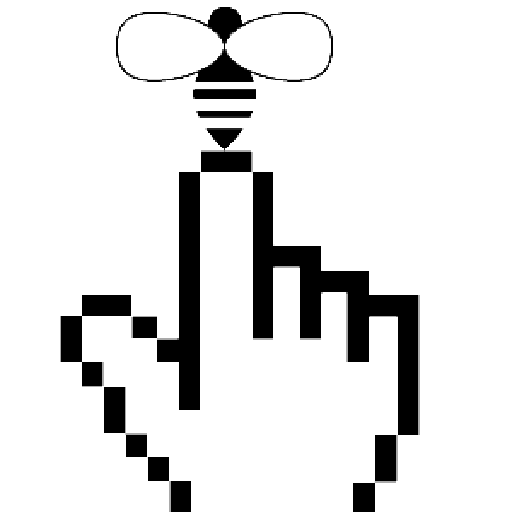Sollen wir sie essen
Der Museumsraum bezieht sich auf eine Empfehlung 2013 der Ernährungs- und Landwirtschaftsorganisation der Vereinten Nationen (FAO), bei der die Rolle der Insekten für die menschliche Ernährung und als Tierfutter hervorgehoben wurde. Das bezog sich sowohl auf die in der Natur gesammelten Insekten als auch auf die in speziellen Insektenfarmen gezüchteten Tiere, die eine Alternative zu der CO₂-intensiven Zucht von Rindern und Schweinen darstellen. In einer über dem Bienenstock angebrachten Wahlurne aus Plexiglas konnten die Besucher in zwei Schlitzen ihr Votum abgeben, ob sie Bienen essen würden oder lieber doch nicht. Wie zu erwarten, warf ein Großteil der Besucher ihren Wahlzettel bei NEIN ein, was unsere Bienen beruhigte, die als stumme Beobachter der Wahl beiwohnten.
Wiederholt boten wir für mutige Gourmets eine öffentliche Bienen-Verkostung an, bei der sich die Testesser selbst ein Bild von der Delikatesse Bienenmaden machen konnten. Fest im Biss und geschmacklich zwischen Shrimps und Waldpilzen, stehen Bienen in der traditionellen asiatischen Küche als reichhaltige Proteinquelle auf den Speisekarten.
Dem Gedanken der Nachhaltigkeit verpflichtet, verkochten wir bei unserer Verkostung ausschließlich männliche Drohnenbrut, die als imkerliche Maßnahme zur Bekämpfung der Varroamilbe regelmäßig dem Bienenstock entzogen werden und nach dem sie in der Tiefkühltruhe gefrostet wurden, oft als Vogelfutter oder Angelköder Verwendung finden.

Entitled "ANOTHER USE OF BEES" the artist group finger (Florian Haas and Andreas Wolf, Frankfurt am Main / Germany) presents three exhibition rooms for their New Museum for Bees in Moscow.
In the context of the museum's work since 2012 exhibitons are being developed which address human visitors and bees at the same time. Subject of the exhibitions are the overlaps of the living environments of humans and bees which are presented in micro exhibition rooms placed on the top of the beehives.
The finger group founded the New Museum for Bees as a decentralized museum with venues in different cities and contexts. Together this growing number of micro exhibition rooms form the architecture of the New Museum for Bees. Some presentations of the museum are temporary as in the case of Moscow, others are installed as a permanent exhibition space, presenting single exhibitions from a variety of locations in a revolving system.
Should we eat them?
In May 2013 the Food and Agriculture Organization of the United Nations published a new study which highlighted the role of insects as food for humans and feed for animal consumption. Insects in the forests as well as breeding farms for insects could be an alternative to the CO2 intensiv breeding of cows and pigs.
It is estimated that insects form part of the traditional diets of at least 2 billion people. Insect gathering and farming can offer employment and cash income, for now mostly at the household level but also potentially in industrial operations.
According to FAO’s research, done in partnership with Wageningen University in the Netherlands, more than 1900 insect species are consumed by humans worldwide. Globally, the most consumed insects are: beetles (31 percent); caterpillars (18 percent); bees, wasps and ants (14 percent); and grasshoppers, locusts and crickets (13 percent). Many insects are rich in protein and good fats and high in calcium, iron and zinc. Beef has an iron content of 6 mg per 100 g of dry weight, while the iron content of locusts varies between 8 and 20 mg per 100 g of dry weight, depending on the species and the kind of food they themselves consume. (Source: FAO report)
Today bees and other insects are a rarity on European menus. But this could change. For example, in an area north of Frankfurt / Germany it was common to eat soup made from May beetles, not only in times of crisis. Those who are interested in eating insects today can already rely on the first cookbooks dedicated to the gourmet way of preparing insects. In addition to this, more and more people are tasting insects on their travels through Asian countries and report about their good experiences back home in Europe.
The taste of insects can be a convincing argument. So to know what we are talking about the finger group organized several test-grillings of bees. In the beginning mostly everbody had his reserves about eating the bees. But once on the grill it already smells so good so that everybody – of course except the vegetarians – had a try. And surprisingly they all liked the peanut-like taste a lot.
With the question "Should we eat them?" this micro-exhibition is directly addressing the human visitors and asks them to choose sides and give their vote. A transparent ballot-box was specially designed for this exhibition room and presents the results of the voting throughout the exhibition.
For further information see: www.fao.org

 gruppe finger
gruppe finger